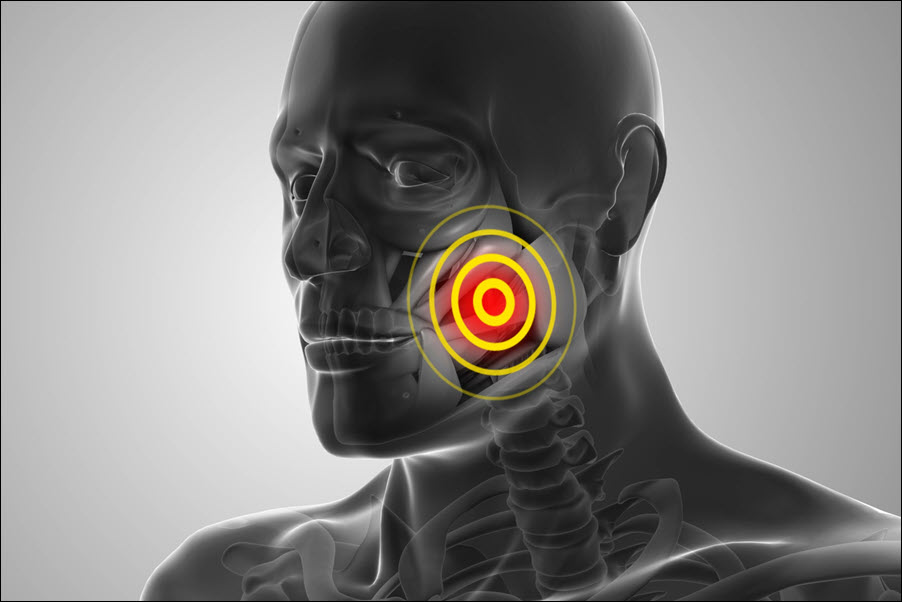Temporomandibular joint (TMJ) disorder affects the jaw joint and surrounding muscles. The TMJ connects the jawbone to the skull, allowing speaking, chewing, and yawning. TMJ disorder occurs when the joint becomes inflamed or misaligned, causing pain and restricted movement. Grinding, jaw injury, and arthritis increase the risk of TMJ problems. Symptoms include jaw pain, clicking sounds, headaches, and difficulty opening or closing the mouth. Early diagnosis and treatment prevent further joint damage and discomfort. Physical therapy, medication, and surgery improve TMJ function and reduce pain. Understanding the causes and treatments of TMJ disorder improves jaw health and overall comfort. Let’s explore the signs and solutions for TMJ disorder.
Causes of TMJ Disorder
 Jaw misalignment, teeth grinding (bruxism), and joint injury often cause TMJ disorder. Misaligned teeth place uneven pressure on the TMJ, causing inflammation and muscle strain. Stress increases jaw clenching and muscle tension, worsening TMJ discomfort. Direct trauma from accidents or sports injuries damages the joint cartilage and surrounding tissues. Arthritis also wears down the joint, reducing cushioning and increasing friction. Poor posture, like resting the chin on the hand, strains the jaw and contributes to misalignment. Treating underlying causes reduces joint pressure and improves function. Correcting misalignment, reducing stress, and protecting the joint prevent further damage. Stronger joint health improves jaw comfort and function.
Jaw misalignment, teeth grinding (bruxism), and joint injury often cause TMJ disorder. Misaligned teeth place uneven pressure on the TMJ, causing inflammation and muscle strain. Stress increases jaw clenching and muscle tension, worsening TMJ discomfort. Direct trauma from accidents or sports injuries damages the joint cartilage and surrounding tissues. Arthritis also wears down the joint, reducing cushioning and increasing friction. Poor posture, like resting the chin on the hand, strains the jaw and contributes to misalignment. Treating underlying causes reduces joint pressure and improves function. Correcting misalignment, reducing stress, and protecting the joint prevent further damage. Stronger joint health improves jaw comfort and function.
Common Symptoms of TMJ Disorder
Jaw pain and stiffness are the most common symptoms of TMJ disorder. Clicking, popping, or grinding sounds when opening the mouth signal joint damage. Headaches and earaches often result from muscle strain caused by poor jaw alignment. Limited mouth opening and jaw locking make chewing and speaking difficult. Muscle soreness around the jaw, face, and neck increases with stress and jaw use. TMJ discomfort also causes tooth sensitivity and uneven bite pressure. Pain often worsens in the morning due to overnight grinding. Early symptom recognition ensures faster diagnosis and treatment. Reducing muscle tension and improving alignment reduces TMJ pain and stiffness.
Non-Surgical Treatments for TMJ Disorder
Most TMJ cases improve with non-surgical treatments. Oral appliances (mouth guards) reduce teeth grinding and protect the joint from excessive pressure. Physical therapy strengthens jaw muscles and improves joint flexibility. Stress management techniques like deep breathing and meditation reduce muscle tension. Anti-inflammatory medications reduce swelling and joint discomfort. Applying heat or ice packs to the jaw reduces inflammation and relieves soreness. Correcting bite alignment with orthodontic treatment reduces joint strain and improves jaw positioning. Dietary changes, like eating soft foods and avoiding chewing gum, reduce jaw stress. Non-surgical treatments improve joint stability and prevent long-term complications.
When Surgery is Necessary
Severe TMJ cases require surgical intervention. Arthroscopy allows surgeons to remove scar tissue and reshape the joint. Open joint surgery repairs or replaces damaged cartilage and bone. Orthognathic surgery corrects jaw misalignment and improves bite function. Joint replacement surgery uses artificial implants to restore smooth movement. Surgery reduces joint friction, increases stability, and improves chewing and speaking. Post-surgical therapy strengthens jaw muscles and improves flexibility. Surgical solutions provide long-term relief for chronic TMJ pain and joint damage. Better joint positioning and function reduce the risk of future problems. Surgery restores natural jaw movement and increases overall comfort.
How to Prevent TMJ Disorder
Reducing stress and improving posture protect the jaw joint. Wearing a mouth guard at night prevents grinding and muscle strain. Maintaining proper bite alignment reduces joint pressure and muscle tension. Stretching and strengthening jaw muscles improve joint flexibility and reduce stiffness. Avoiding hard and sticky foods prevents jaw overuse and irritation. Practicing relaxation techniques reduces jaw clenching and muscle tightness. Regular dental checkups detect early signs of TMJ problems and prevent complications. Treating misalignment and reducing grinding improves long-term jaw health. Proper jaw care increases comfort and reduces the risk of TMJ disorder.
TMJ disorder results from jaw misalignment, grinding, and joint strain. Jaw pain, clicking sounds, and muscle stiffness signal joint problems. Early diagnosis and non-surgical treatments improve joint function and reduce discomfort. Physical therapy, mouth guards, and medication provide effective relief. Severe cases require surgical correction to restore joint stability and reduce friction. Preventing TMJ disorder involves reducing stress, improving posture, and maintaining proper bite alignment. Consistent care strengthens jaw muscles and reduces strain on the joint. Treating TMJ disorder improves chewing, speaking, and overall comfort. Strong joint health ensures better oral function and long-term relief.


